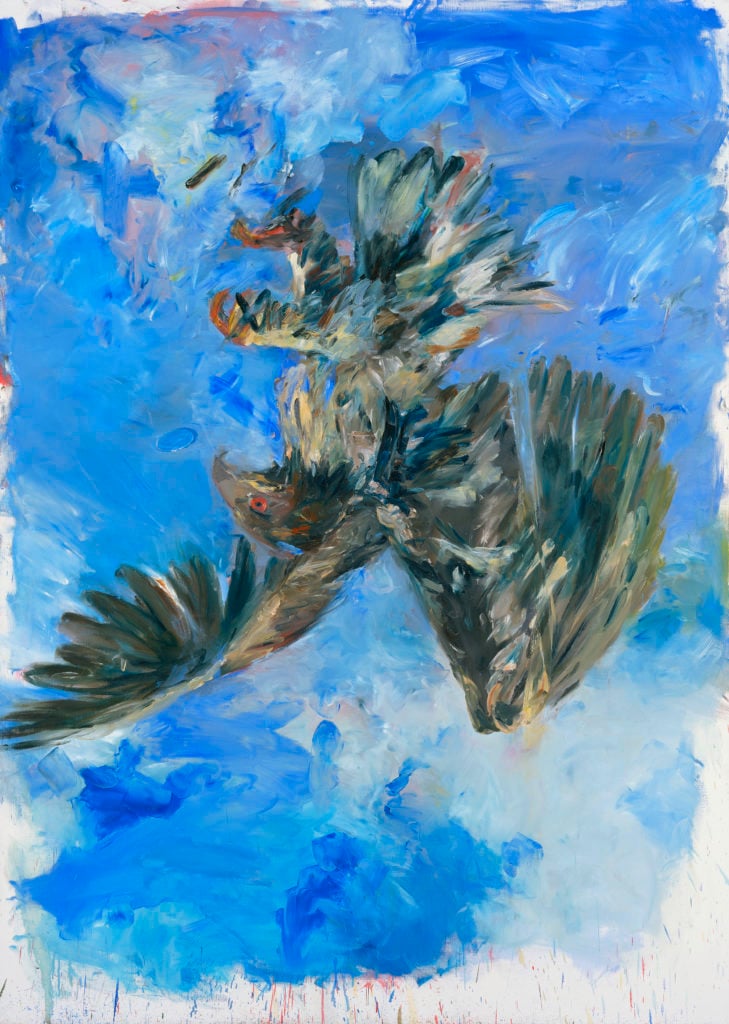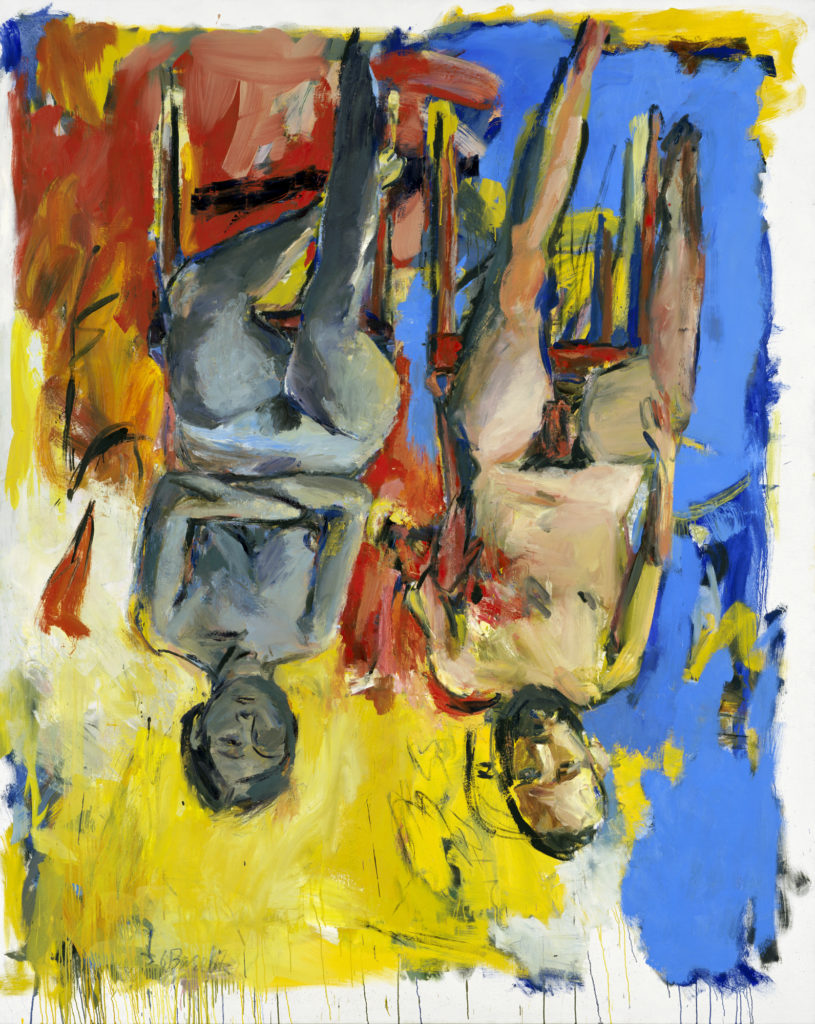Art & Exhibitions
The Hirshhorn and Beyeler Join Forces to Stage a Georg Baselitz Survey—Naked Man and All
The Swiss-US retrospective will include early painting that shocked 1960s Germany, plus “exuberant and explosive” late works.

The Swiss-US retrospective will include early painting that shocked 1960s Germany, plus “exuberant and explosive” late works.

Javier Pes

Georg Baselitz will get a US-Swiss retrospective next year co-organized by the Hirshhorn in Washington, DC, and Fondation Beyeler, near Basel. The show is set to kick off at the private museum in Switzerland on January 21—two days before the German artist turns 80.
His survey will feature more than 100 works from every period in his six-decade-long career, including paintings, such as his upside down German eagle, Fingermalerei – Adler (1972), sculptures, and works on paper, as well as new works. “He is a great painter who has been consistently good over the years,” Stéphane Aquin, the chief curator of the Hirshhorn, who is co-curator of the show, tells artnet News. He adds that the artist is enjoying an “exuberant and explosive” late period of creativity.
Aquin reveals that among Baselitz’s latest work due to go on show are a series of “Heads,” partly inspired by portraits by the German 19th-century artist Ferdinand von Rayski (1806–1890). These relate back to one of Baselitz’s earliest series, “Rayski-Head.” There will be a Rayski painting from 1959 and one from 2017, Aquin says.
The last big Baselitz show in a public US institution was two decades ago. Organized by the Guggenheim, it then toured to the Hirshhorn. Next year’s exhibition, which runs until April 29 at Fondation Beyeler and opens at the Hirshhorn on June 21 (until September 16), will include one of the artist’s most celebrated—and, in the early 1960s, controversial—paintings, The Naked Man. Painted in 1962, it was seized by the German authorities as obscene because of the figure’s long penis, which stands and salutes.

Georg Baselitz, Schlafzimmer (1975), Private collection ©the artist. Photo by Jochen Littkemann, Berlin
The artist’s reaction to American art as a young man and his warm reception in America after he first showed in New York in 1980 provide a subtext to the retrospective. Aquin says that seeing Ab-Ex works in 1958 had a profound effect on Baselitz’s art. “It was a shock for him. He pushed back from abstraction,” Aquin says—but works by artists such as Jackson Pollock, among others, had a lingering fascination. “Baselitz engages with the European tradition and the American tradition,” he notes.
The collaboration between the two institutions has its benefits. The US curator says that working in partnership with the Beyeler has helped secure paintings and sculptures, in particular from private collectors who get regular loan requests. That said, there are a lot of works to choose from. A prolific artist, Aquin estimates that Baselitz has created around 2,700 paintings. His library and archive are also impressive, Aquin adds.
Recent Baselitz shows include a touring exhibition of his “Heroes” paintings, which closed last month at the Guggenheim Bilbao, and a current survey of paintings and works on paper at Michael Werner Gallery in New York (through February 24). And, of course, there are the works the artist lent to leading German museums, only to recall them in 2015 as a protest against export regulations on works more than 50 years old.